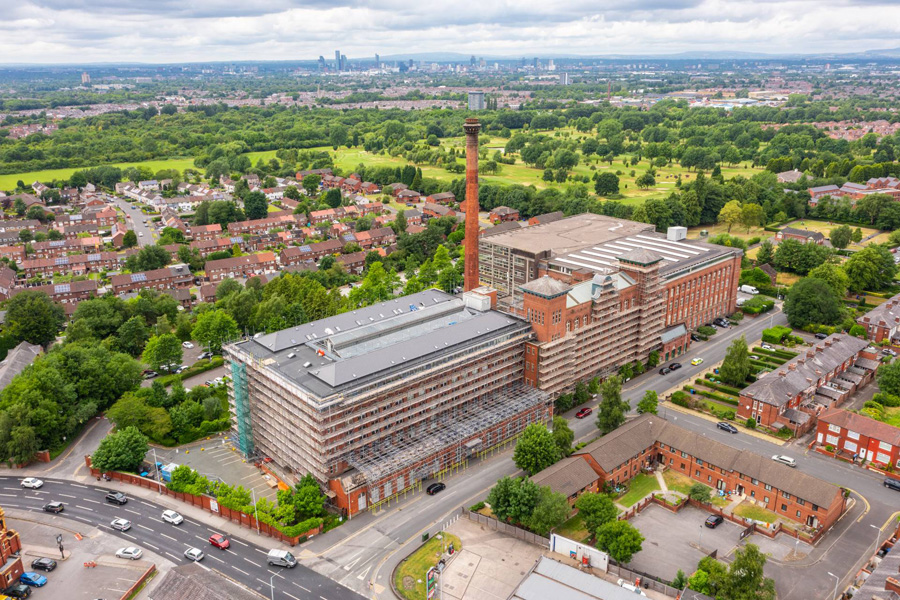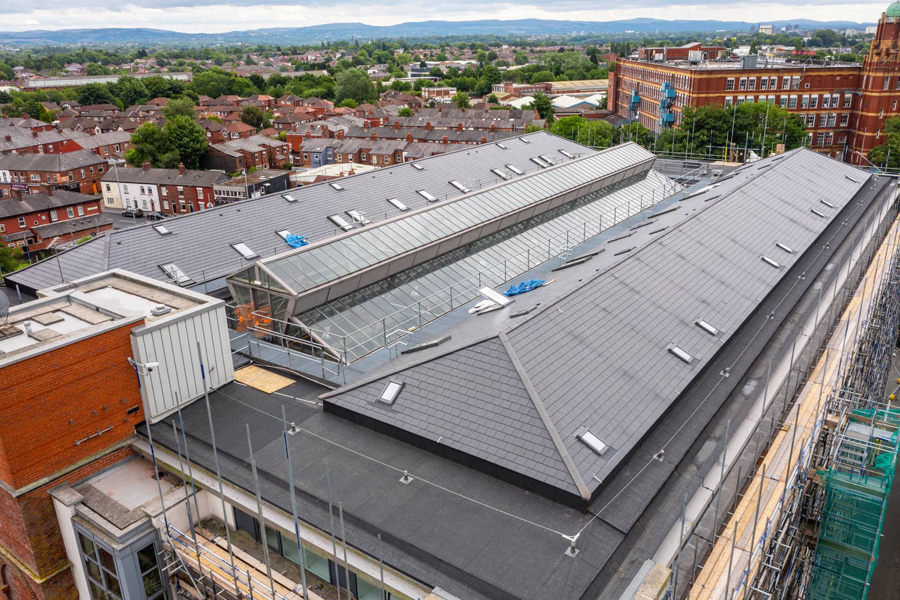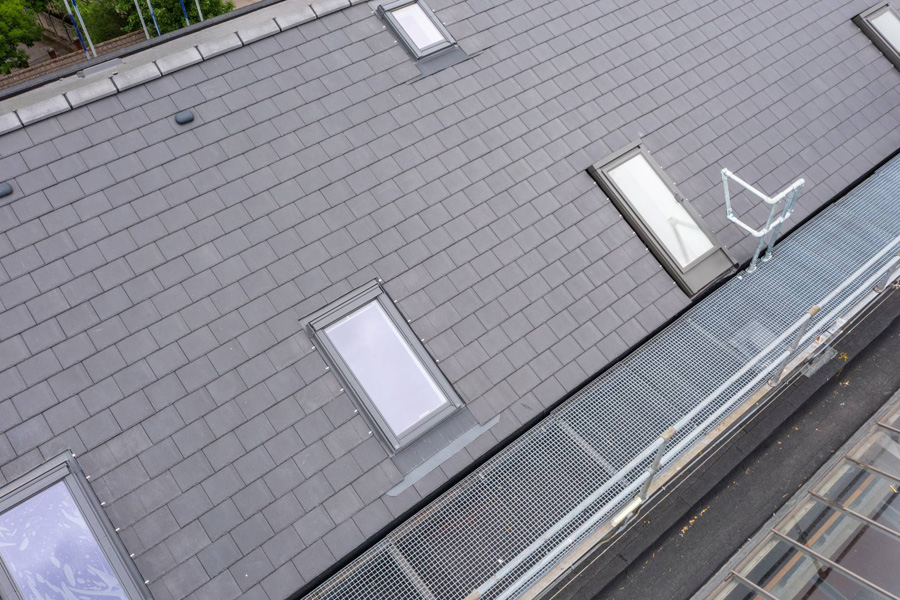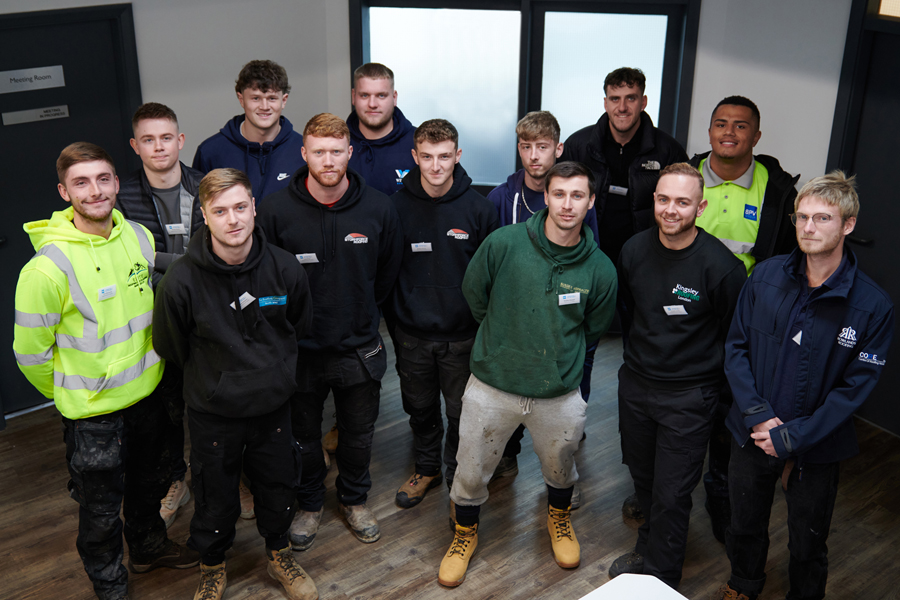
BMI Redland’s SpecMaster service provided a solution on this most difficult of projects. When Grade II Listed Victorian building Houldsworth Mill was repurposed into an apartment complex, tenants and owners were proud to live in a building of great local heritage. However, when the roof started to fail, pride turned to serious concerns for the safety of the building and the apartments of the tenants, and it became apparent that a complete refurbishment was required to ensure the Grade II Listed Building could be protected for decades to come.
The client ordered a complete reroofing, including a full specification to ensure the quality and longevity of the roof from the ground up. They employed Karl Austerfield Roofing to carry out the complex re-roof, who turned to Redland as a tried and trusted supplier able to provide a complete solution and technical support to address the complexities of the project.

The challenge: Satisfying the conservation officers
Consisting of two twin pitched roofs with a glazed atrium separating them, the roofs had warm roof construction and were dotted with emergency exit Velux windows. The natural slate roof had been recovered using an interlocking slate tile system from another supplier, and had been installed in such a way that a myriad of water ingress issues had resulted.
However, the main issue that arose with the project was actually getting a refurbishment started. Many of the specifications that were drawn up as actionable solutions were rejected by conservation officers. Because Houldsworth Mill is a Grade II Listed Building, and the specified solutions would have affected the height or shape of the building in some way, even an increase in height of only 50mm was unacceptable and would have required planning permission.
As the roof is a warm roof, the construction from the ceiling up should have been a setup of plasterboard, followed by rafters filled with quilt insulation, followed by a 50mm air gap ventilated with eaves ventilation from the ridge. The failure was that the rafters running into the hips should have had high-level extract ventilation, which they did not. The rafters should also have had vent tiles on both sides as they ran up the pitch of the roof - also missing. As neither of these existed, the roof was placing excess reliance on the insulation to stop condensation from forming. It was unable to do so and, therefore, water ingress issues were caused as a result.
Similarly, the insulation did not provide the levels of energy saving required by building regulations. So, the insulation levels needed to be increased. However, this would mean increasing the rafter sizes and therefore installing more ventilation tiles. From calculations conducted by the contractor, 80 vent tiles needed to be installed on the roof. This was denied by a conservation officer as installation of the vent tiles would increase the height of the building and would therefore require planning permission. They turned to the Redland SpecMaster service to provide a bespoke roof specification and 15-year weathertightness guarantee.

The solution: An innovative specification
The Redland Technical team initially looked at a number of different solutions,however each would have raised the roof height, requiring planning permission and delaying the project further. After several readjustments to the initial spec, the Redland Technical team designed a specification incorporating a vapour control layer (VCL) and rigid insulation, which got the approval from conservation officers. The contractors stripped out the existing insulation, draped individual sheets of VCL over rafters and along the ceiling, creating a new section of material which was sealed. Rigid insulation material was then put back into the rafters in the place of quilted insulation. Rigid insulation has a higher insulation value and therefore less material was sufficient, meaning the height of the roof was not increased.
The roofing team of Karl Austerfield Roofing Contractors had to work meticulously to ensure the changes to insulation did not result in an increase of height to the roof, relying on and following the exact calculations of the specification design to achieve the necessary energy values. Once the insulation was installed, the reroofing was fairly straightforward thanks to the use of the Redland Cambrian Slate tile - an interlocking lightweight tile made from over 60% recycled natural slate - providing a natural slate aesthetic finish to the building that also satisfied conservation officers.
The Houldsworth Mill roof refurbishment proves that unrivalled technical expertise, as deployed by the Redland Technical team on this project, can conquer even the most complex of roof challenges. BMI Redland’s free technical support services for customers at all stages of the project, combined with skilled roofers, like the team of Karl Austerfield Roofing Contractors, ensures that roofs will withstand the tests of time.
Find more information about the different tools and services Redland offers for pitched roofs here: https://www.bmigroup.com/uk/support/pitched-roofing-services.













